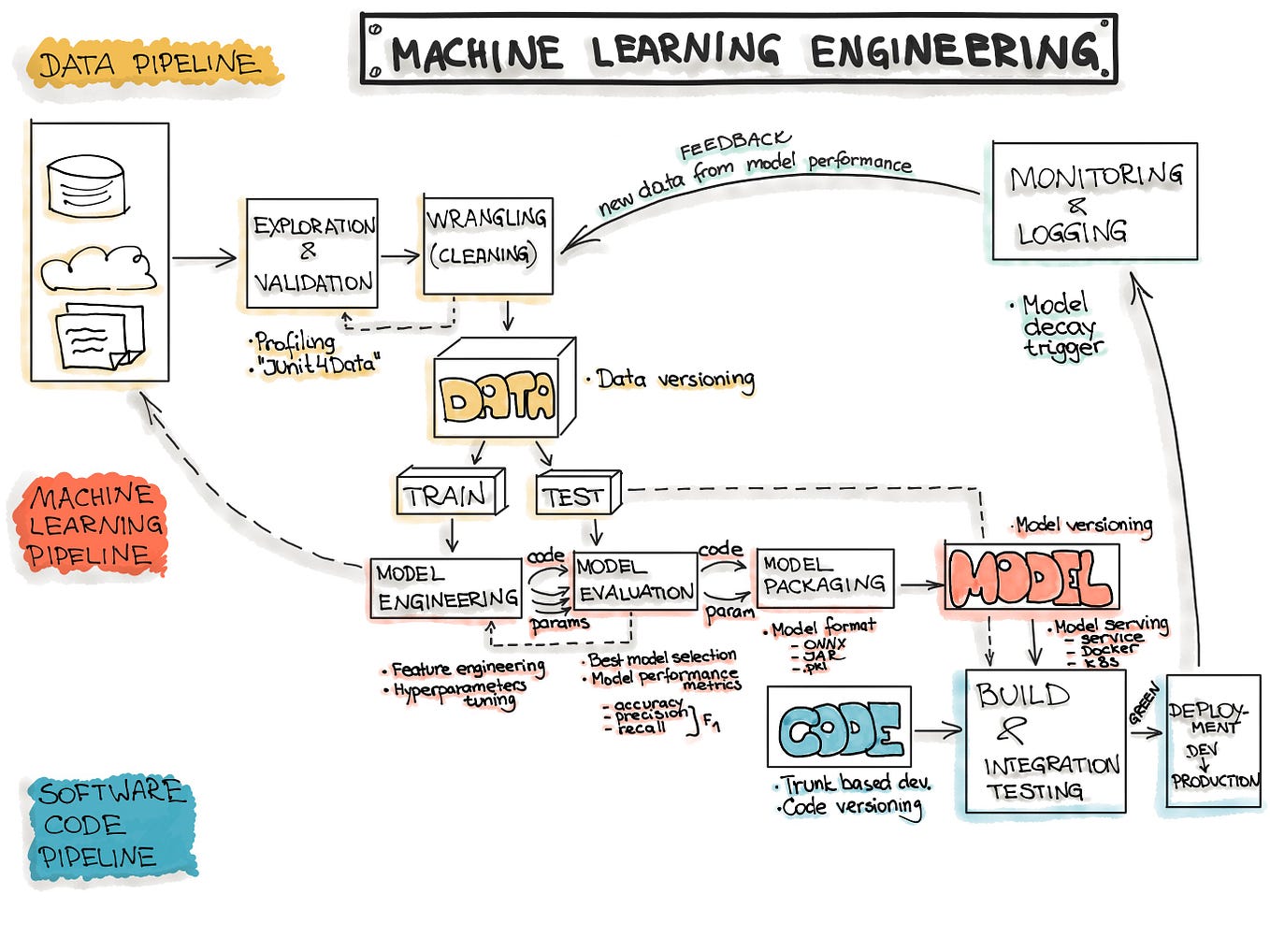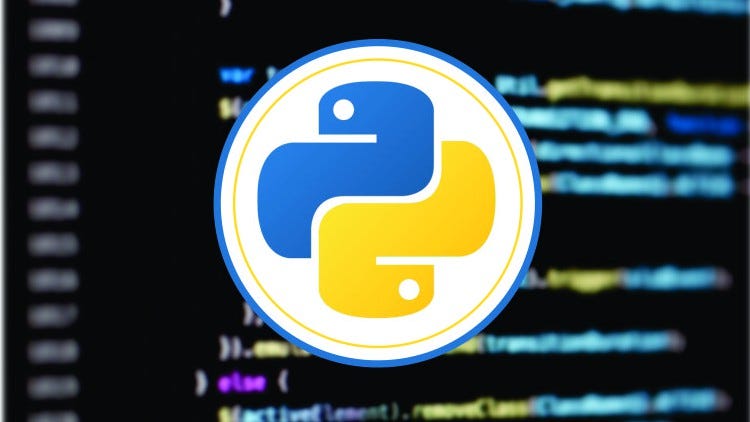Logic Programming and the Design of Humanistic AI using Python
Build Logic, and Facilitate Artificial General Intelligence in Machines
Since its inception, Artificial Intelligence has been a means of replicating human thoughts and behavior, and give these attributes to machines.
The success of AI is measured as the degree to which a machine can act astutely. The smarter the machine gets, the better that AI code is considered.
As the advent of creating intelligent machines is increasing, there is also an increase in the creative ways of coding these machines. One such creative construct being used to build AI is Logic Programming. LP deals with rules, functions, and inferences. It is derived from the fact that when a machine is trained enough to understand the rules present in its environment and later uses these rules to distinguish between “right” and “wrong”, that is when the machine has become intelligent and is correctly mimicking human behavior.
What is Logic Programming?
These are theories based on AI Programming that form the basis of code which learns from patterns and rules. Logic Programming talks about the study of principles that orbit across the establishment of reasoning within tasks. It is the analysis of present rules, using which future outcomes can be derived. For instance, if three statements are resulting in a ‘True’ answer, the program can infer the output of a fourth related statement.
Idea Description
As the words suggest, Logic Programming is combined of two distinct ideas — logic and programming. The logic here details the facts and rules that the programming structure needs to understand. A logical approach to programming requires a set of input rules that the code learns and then infers an output on a new related fact it has not seen before. This can also be viewed as a form of a learning algorithm with explicit instruction of understanding.
Writing code in Python, C, C++, Java, etc. we have observed paradigms like object-oriented programming (OOPS), abstraction, looping constructs, and numerous other states of programming. Logic Programming is just another programming paradigm that works on relationships. These relationships are built using facts and rules and are stored as a database of relations. It is a programming methodology that works on formal and explicit logic of events.
Relation: Relations are the basis of logic programming. A relation can be defined as a fact that follows a certain rule. For example, a relation given by [ A 🡪 B ] is read as “if A is true, then B occurs”. In language terms, this can be read as, “If you are an Engineer, then you are a Graduate” and infers that, “Engineers are Graduates”. In programming languages, the semantics of writing relations change based on the language’s syntax, but this is the overall rationality behind what relations mean.
Facts: Every program that is built on logic needs facts. To achieve a defined goal, facts need to be provided to the program. As the name suggests in general English, facts are merely the truth. True statements that represent the program and the data. For instance, Washington is the capital of the United States of America.
Rules: Rules, like programming syntax, are the constraints that help in drawing conclusions from a domain. These are logical clauses that the program or the fact needs to follow to build a relation. You can think of it like this, the fact is that Raman is a man. Now, gender can be a singular entity, that is a rule. A man cannot be a woman. Therefore, the relations we build here are that, since Raman is a man, he cannot be a woman. This is how rules are built:
For example:
predecessor(A,B) :- parent(A,B).
predecessor(A,C) :- parent(A,B), predecessor(B,C).
This can be read as, for every A and B, if A is the parent of B and B is a predecessor of C, A is the predecessor of C. For every A and B, A is the predecessor of C, if A is the parent of B and B is a predecessor of C.
Building the Logic
Since we are focusing on creating applications solely based on Logic, it is necessary to first understand how this logic works and how it can be derived. Below we will follow the hierarchy of building “Logic”.
- Propositional Logic: All forms of code building start with the most basic form of logic, which is propositional. Here, statements are made by propositions, that can be defined as declarative statements having either of two outcomes; True or False. It is a knowledge representation technique used in Mathematics.
A proposition formula that is always true is called Tautology, and it is also called a valid sentence. A proposition formula that is always false is called Contradiction.
It is Sunday. (True)
The Sun rises from North (False proposition)
3+6= 7 (False proposition)
3 is a prime number. (True)
- First-Order Logic: This is an extension of the Propositional Logic. First-order also builds a boolean representation, but it does it in a space called the domain. This domain is a partial view of the world with a limited environment. First-Order logic is made up of syntax and semantics.
In addition to facts (as assumed by propositional logic), First-Order logic also assumes that the world contains objects, relations, and functions that represent occurrences which cannot be classified as true or false.
For example, consider the sentence “X is an Integer”. This sentence consists of two parts. The second part “is an integer” is a Fact. A variable can either be an integer or not (Boolean, hence, Propositional). But, the first part “X”, also called the subject, is not Boolean. It is a naturally occurring object and could have been any variable. The combination of a natural substance (non-boolean) with propositional logic is the First-Order Logic. These are a few examples of these non-boolean substances of First-Order Logic.
a. Constants (1, 2, A, John, etc.)
b. Variables (x, y, z, a, b)
c. Predicates (Brother, Father, >,<)
d. Function (sqrt, LeftLegOf, etc.)
e. Connectives (∧, ∨, ¬, ⇒, ⇔)
f. Equality (==)
- Clausal-Form Logic: The final form of logic is clausal form. This is used in Logic Programming. Clausal-Form logic is a subset of First-Order Logic. The knowledge given to a first-order logic system is manipulated using the resolution inference system that enables the proof of theorems.
Use Cases of Logic Programming
- Logic Programming is extensively used in Natural Language Processing (NLP) since understanding languages is about the recognition of patterns that numbers cannot represent.
- It is also used in prototyping models. Since expressions and patterns can be replicated using logic, prototyping is made easy.
- Pattern matching algorithms within image processing, speech recognition, and various other cognitive services also use logic programming for pattern recognition.
- Scheduling and Resource Allocation are major operations tasks that logic programming can help solve efficiently and completely.
- Mathematical proofs are also easy to decode using logic programming.
Solving Puzzles using Artificial Intelligence
Logic Programming can be used to solve numerous mathematical problems that will ultimately help in building an artificially intelligent machine. In the sections coming next, we will observe how Logic Programming can be used to evaluate expressions in mathematics, make programs learn operations, and form predictions. We will also solve a real problem using two libraries that influence logic programming in Python.
Kanren: Kanren is a library within PyPi that simplifies ways of making business logic out of code. The logic, rules, and facts we discussed previously can be turned into code using ‘kanren’. It uses advanced forms of pattern matching to understand the input expressions and build its own logic from the given input. We will be using this library in the sections below for mathematical computations. The import and installation steps are mentioned in the code section that follows.
SymPy: SymPy stands for symbolic computation in Python and is an open-sourced library. It is used for calculating mathematical constructs using symbols. The SymPy project aims to establish a completely featured Computer Algebra System (CAS). The aim here is to keep the understanding of the code simple and comprehensive.
Evaluating Mathematical Idioms using Logic Programming
Algorithms are nothing but implementation of logic and control. Similarly, when the logic runs a mathematical function, we call it a mathematical expression. These expressions are the inputs we give to the program, based on which the program understands the rules that are present in the logic. Based on the understanding of these rules, future expressions can also be evaluated. Let us see an implementation of Logic Programming to evaluate mathematical expressions:
CODE 1: Check for Mathematical Patterns pip install kanren
pip install sympy# Define values that will undertake the addition and multiplication operations
addition = 'add'
multiplication = 'mul'# Define facts and properties of each operation
fact(commutative, multiplication)
fact(commutative, addition)
fact(associative, multiplication)
fact(associative, addition)# Declare the variables that are going to form the expression
var_x, var_y, var_z = var('var_x'), var('var_y'), var('var_z')# Build the correct pattern that the program needs to learnmatch_pattern = (addition, (multiplication, 4, var_x, var_y), var_y, (multiplication, 6, var_z))match_pattern = (addition, (multiplication, 3, 4), (multiplication, (addition, 1, (multiplication, 2, 4)),2))# Build 3 distinct expressions to test if the function has learnttest_expression_one = (addition, (multiplication, (addition, 1 , (multiplication, 2, var_x )), var_y) ,(multiplication, 3, var_z ))test_expression_two = (addition, (multiplication, var_z, 3), (multiplication, var_y, (addition, (multiplication, 2, var_x), 1)))test_expression_three = (addition , (addition, (multiplication, (multiplication, 2, var_x), var_y), var_y), (multiplication, 3, var_z))# Test the evaluations of the expression on the test expressions
run(0,(var_x,var_y,var_z),eq(test_expression_one,match_pattern))
>>> ((4, 2, 4),)run(0,(var_x,var_y,var_z),eq(test_expression_two,match_pattern))
>>> ((4, 2, 4),)run(0,(var_x,var_y,var_z),eq(test_expression_three,match_pattern))
>>> ()# Since the first two expressions satisfy the expression above, they return the values of individual variables. The third expression is structurally different and therefore does not match.CODE 2: Symbolic Representations of Logic# Running Mathematical Evaluations using SymPy
print (math.sqrt(8))
>>> 2.8284271247461903# Although the Math Square Root function gives an output for the Square Root of 8.
# We know this is not accurate since the square root of 8 is a recursive, non-ending real numberprint (sympy.sqrt(3))
>>> sqrt(3)# Sympy on the other hand, symbolizes the output and shows it as root of 3
# In case of actual square roots like 9, SymPy gives the correct result and not a symbolic answerCODE 3: Prime Number check using Logic Programming# Defining a function to build the expression for Prime Number check
def exp_prime (input_num):
if isvar(input_num):
return condeseq([(eq, input_num, x)] for x in map(prime, iter_one.count(1)))
else:
return success if isprime (input_num) else fail# Variable to use
n_test = var()set(run(0, n_test,(membero, n_test,(12,14,15,19,21,20,22,29,23,30,41,44,62,52,65,85)),( exp_prime, n_test)))
>>> {19, 23, 29, 41}run(7, n_test, exp_prime( n_test ) )
>>> (2, 3, 5, 7, 11, 13, 17)
The code mentioned above only consists of all necessary pseudo logic and will not run independently on any IDE. The complete code is present in the repository linked below and I would encourage you to go through the Google Colab notebook from the repository that contains the entire working code.
Conclusion
For the better part of almost a decade, AI has been the most invested skill. Companies are adopting it and researchers are constantly trying to improve it. This improvement has been aided significantly by the application of Logic Programming. When machines can infer thoughts based on the rules given to them, they become intelligent. Through this story, we have been able to walk through and glimpse at Logic Programming, which is gradually becoming an important paradigm for building AI applications. From definitions to implementation, we saw Logic Programming in action. Like I have mentioned in all my previous stories as well, it is best to keep the code repository open alongside this article to get the best out of these concepts. Also, I would encourage you to go through the References section that will help you understand every concept in detail.
Some interesting Machine Learning, Data Science, and Artificial Intelligence readings and tutorials:
- Learn to build an End-to-End AI & ML workflow for Production on Microsoft Azure.
2. Use the Functional Programming paradigm to build robust AI applications.
3. Simplify the complex NLP code using constructs from Machine Learning
[About Me]
I am Rahul, currently researching Artificial Intelligence and implementing Big Data Analytics on Xbox Games. I work with Microsoft. Apart from professional work, I am also trying to work out a program that deals with understanding how economic situations can be improved across developing nations in the world by using AI.
I am at Columbia University in New York at the moment and you are free to connect with me on LinkedIn on Twitter.
[References]
- http://www.doc.ic.ac.uk/~cclw05/topics1/index.html
- https://en.wikipedia.org/wiki/Logic_programming
- https://www.jigsawacademy.com/blogs/ai-ml/logic-programming/
- https://data-flair.training/blogs/python-logic-programming/
- https://en.wikipedia.org/wiki/List_of_programming_languages_for_artificial_intelligence





